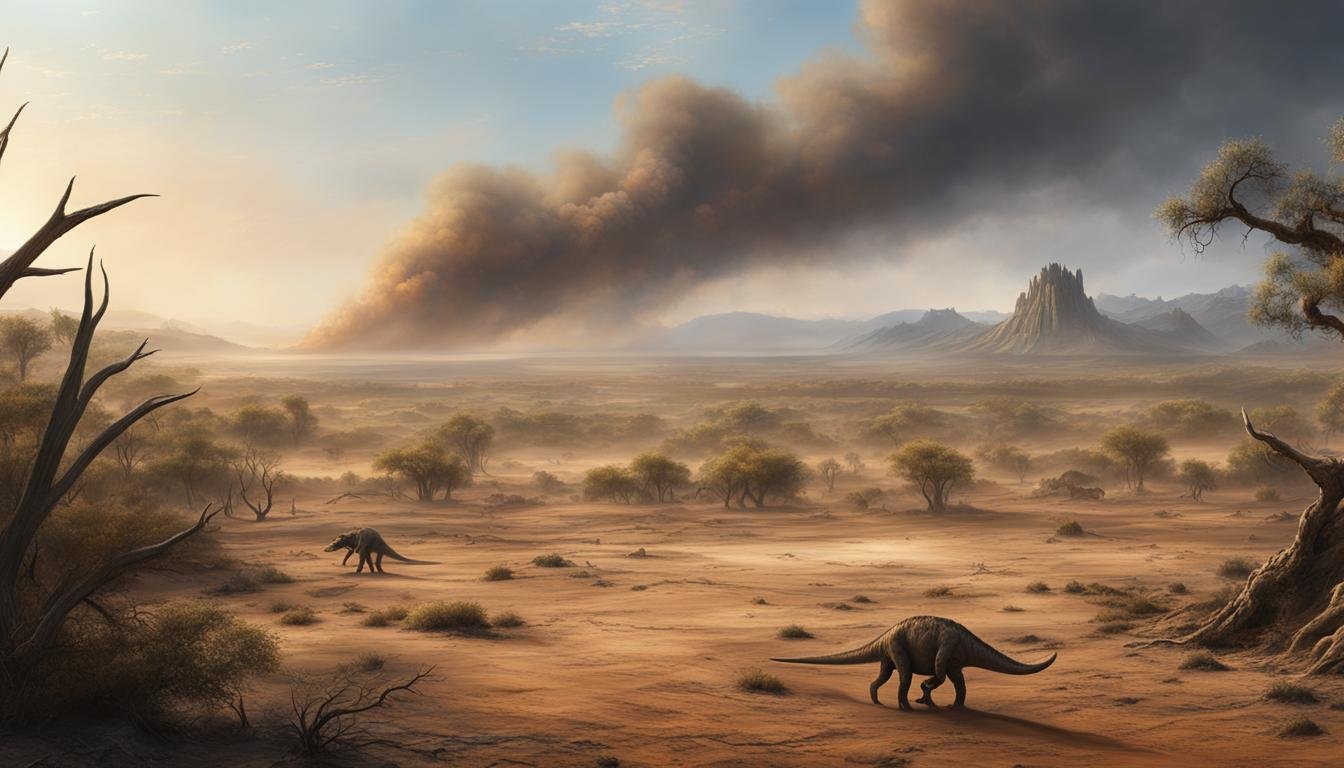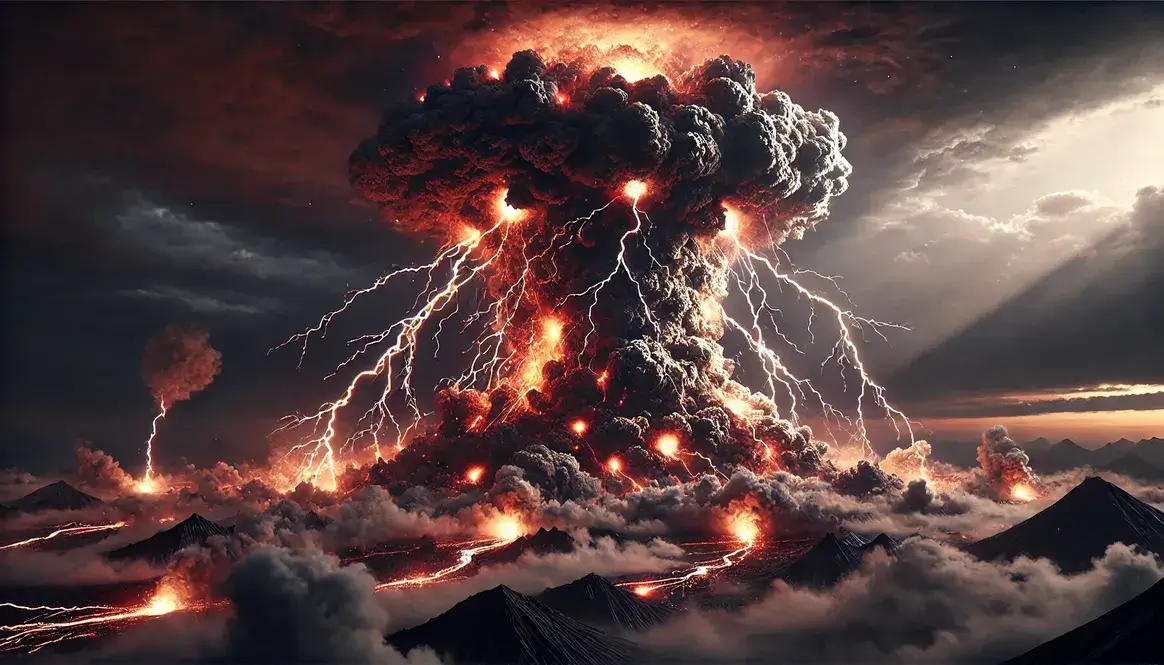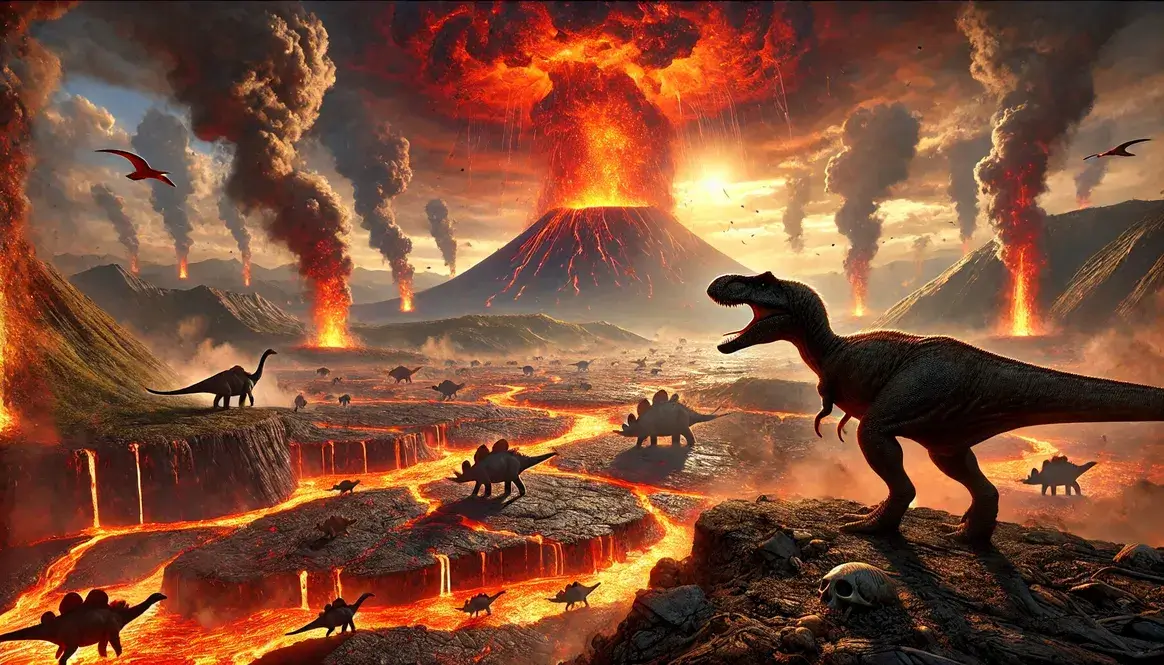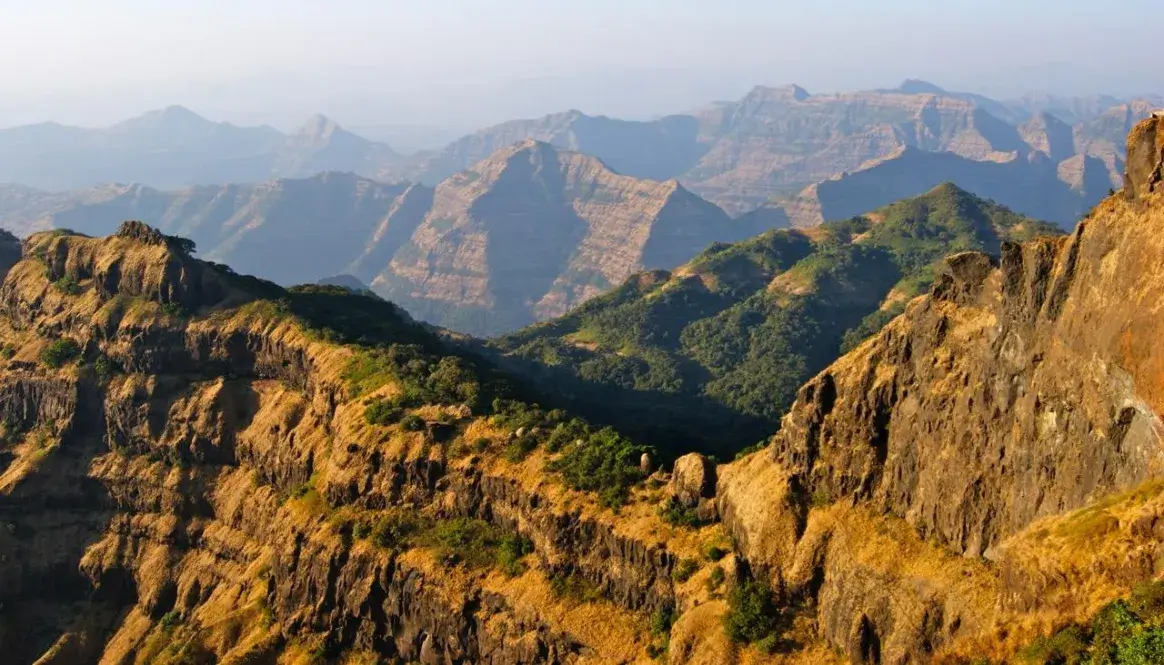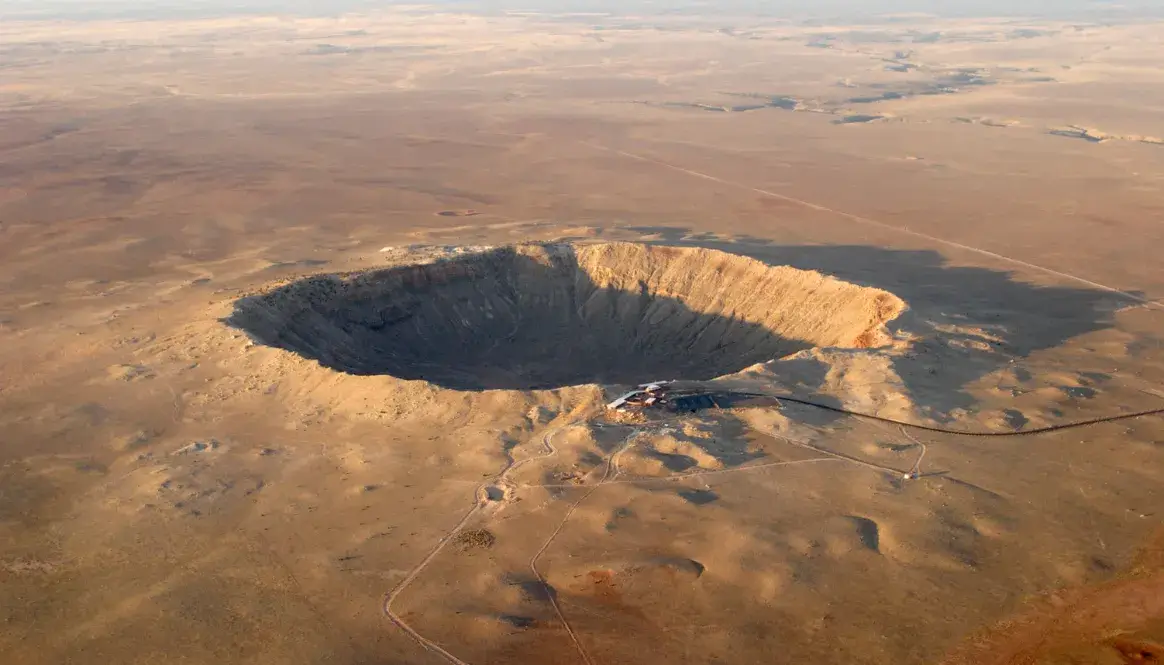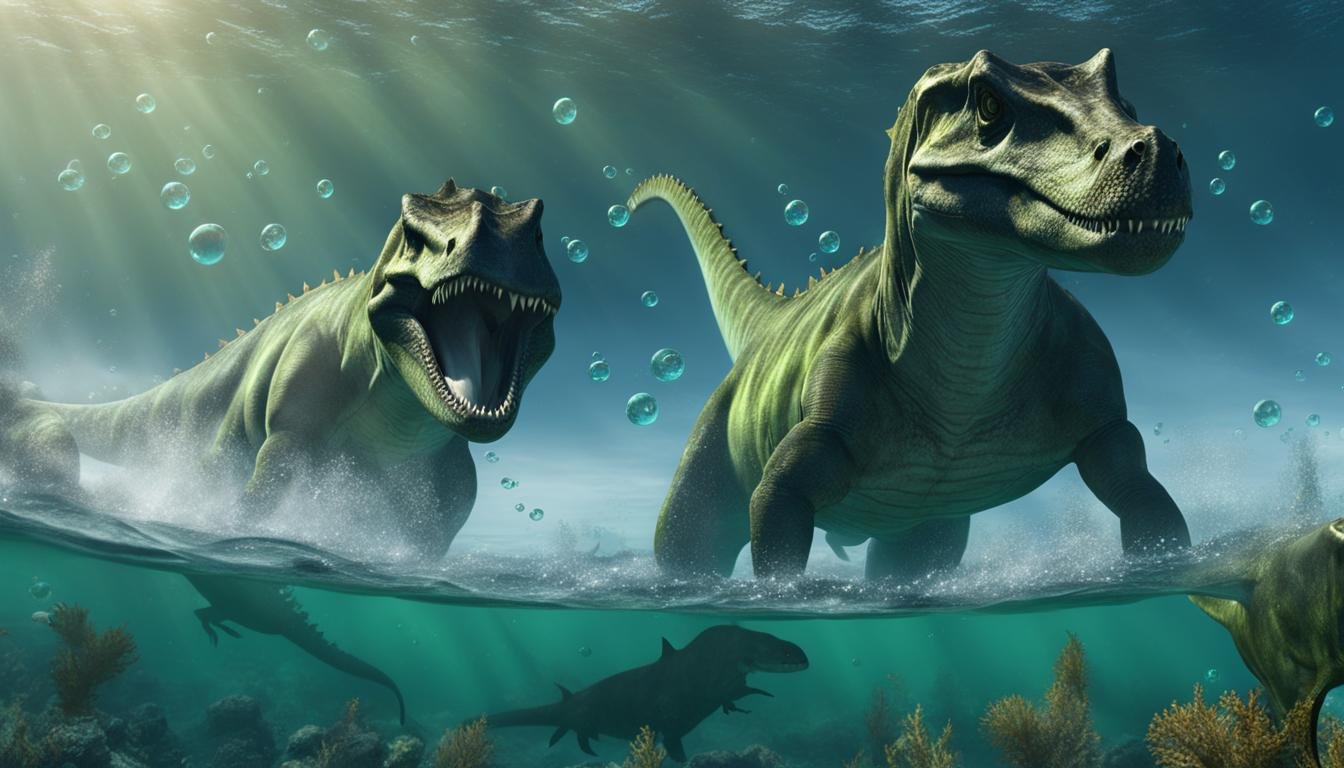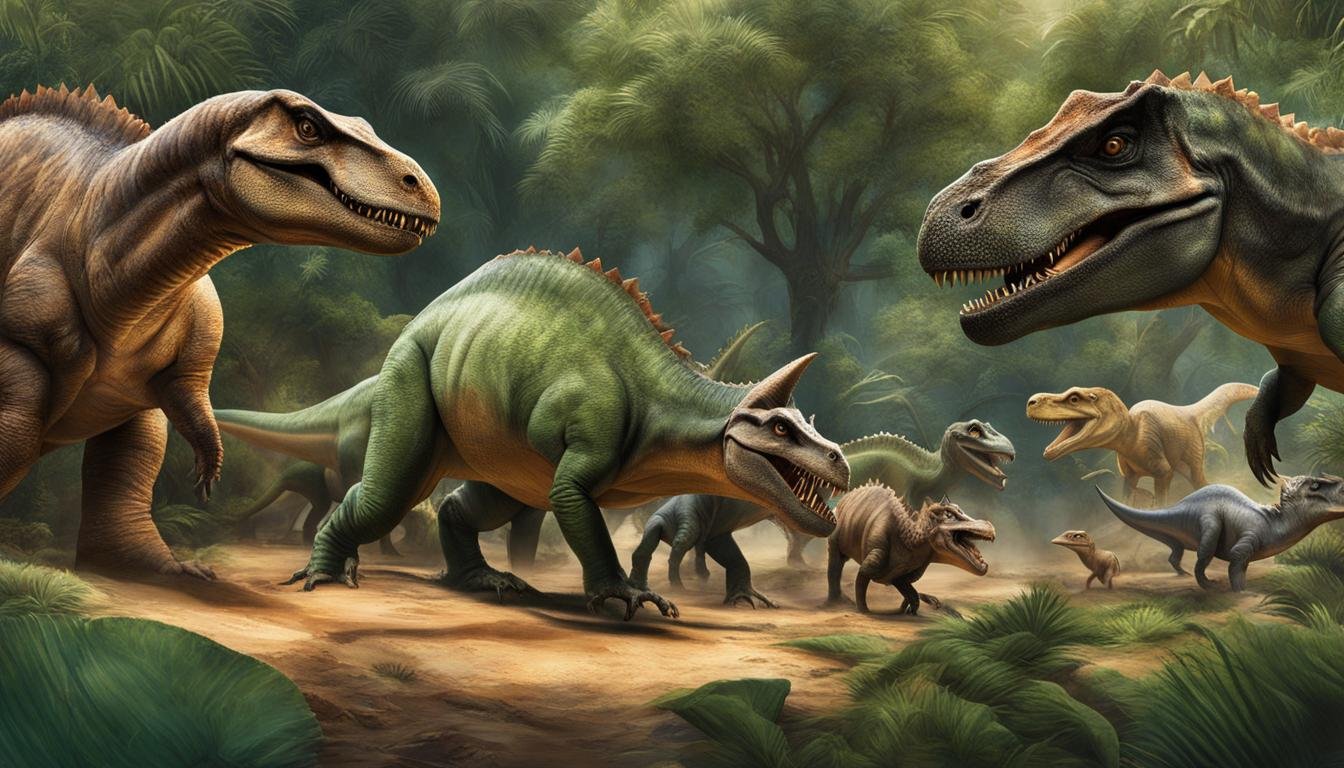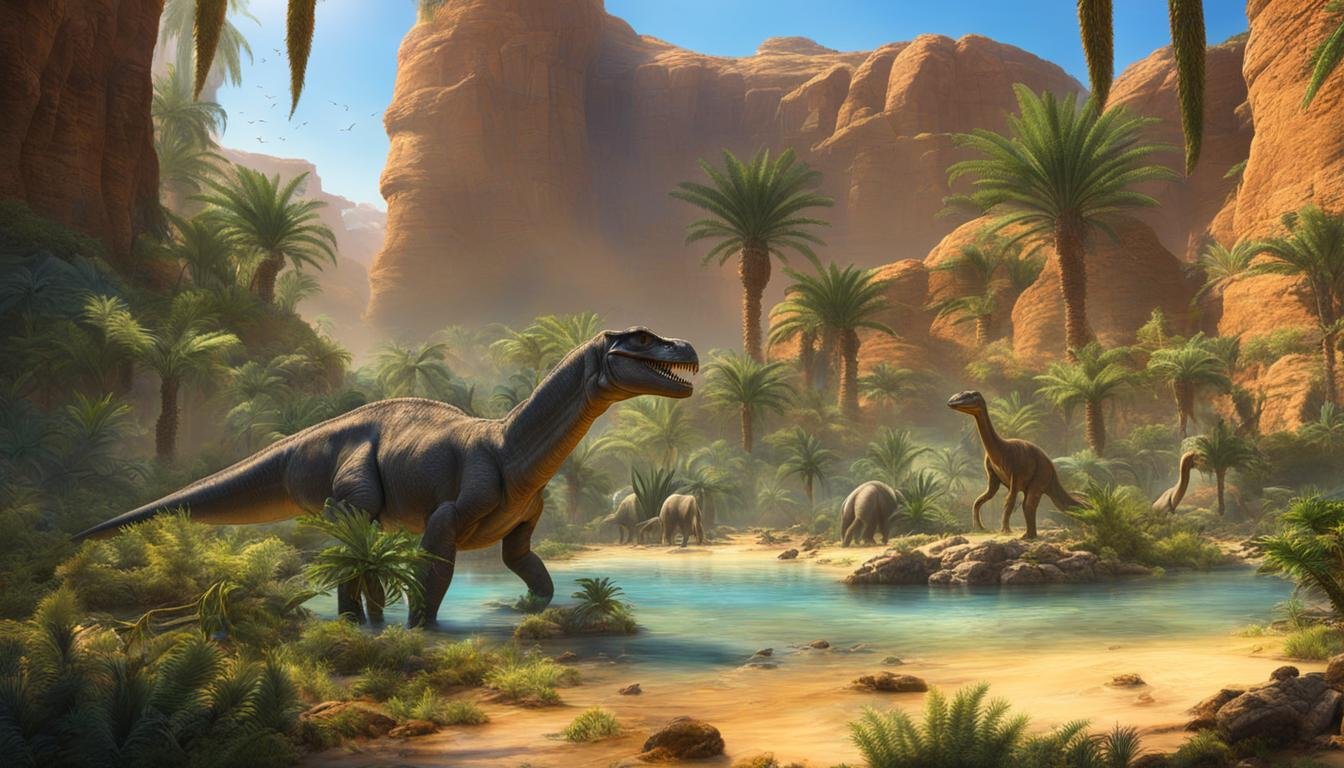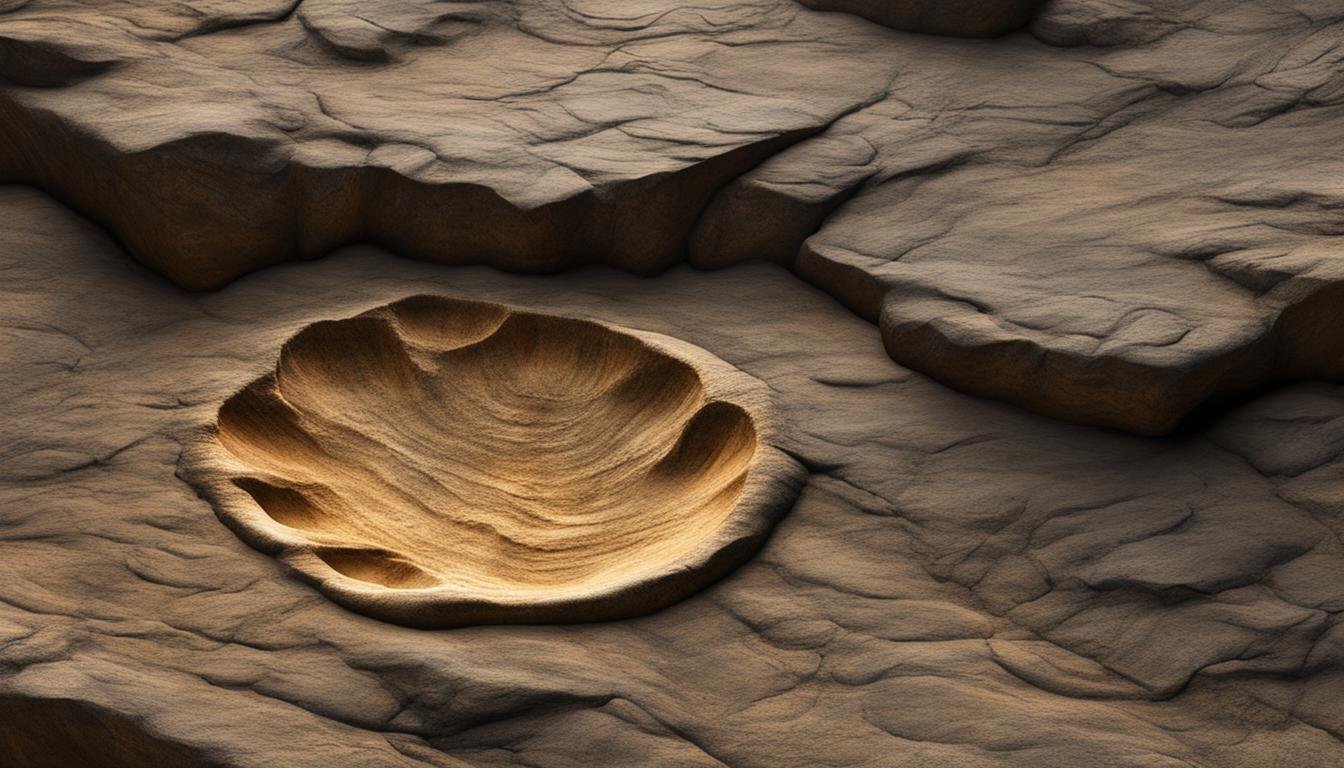A new study by researchers at Imperial College London provides evidence of the significant impact of climate change on dinosaur habitats. The study focuses on the effects of an asteroid strike 66 million years ago and the subsequent extreme global cooling, known as the impact winter.
The researchers confirm that the impact winter caused by the asteroid strike decimated suitable habitats for dinosaurs worldwide. This long-lasting and harsh winter was a primary factor contributing to the extinction of dinosaurs. Interestingly, the study also suggests that the volcanic eruptions around the same time may have actually assisted some species in surviving the extinction event.
This research highlights the vulnerability of dinosaur habitats to climate change, specifically the impact of extreme global cooling triggered by catastrophic events like asteroid strikes. Understanding the effects of climate change on past ecosystems can provide valuable insights into the challenges faced by species in our current changing climate.
| Main Point | Description |
|---|---|
| Impact of Climate Change on Habitats | Extreme global cooling, triggered by an asteroid impact, had a profound effect on dinosaur habitats. |
| Devastation by Asteroid Impact | The asteroid strike and the subsequent ‘impact winter’ led to the destruction of suitable habitats for dinosaurs across the globe. |
| Role of Volcanic Eruptions | Volcanic eruptions during this period may have created conditions for some species to survive, illustrating the complex interaction of different climate-altering events. |
| Lessons from Past Climate Change | Studying the long-term effects of past climate change on ecosystems can offer valuable perspectives on current challenges facing modern species. |
| Importance of Adaptability | The ability to adapt is essential for species to endure and prosper amidst changing climatic conditions. |
The Role of the Chicxulub Asteroid Impact
A significant event in Earth’s history, the Chicxulub asteroid impact played a crucial role in the eradication of dinosaur habitats. This cataclysmic event, which occurred off the coast of Mexico approximately 66 million years ago, triggered what is known as an “impact winter.” The long-lasting and extreme global cooling caused by the asteroid impact had a profound impact on the ability of dinosaurs to survive.
The impact winter created by the Chicxulub asteroid strike lasted for decades, leading to the devastation of suitable habitats for dinosaurs worldwide. The harsh conditions, characterized by plummeting temperatures, reduced sunlight, and altered weather patterns, severely disrupted ecosystems. As a result, many species, including dinosaurs, were unable to adapt and ultimately perished.
The effects of the Chicxulub asteroid impact were more severe and long-lasting compared to the volcanic eruptions that occurred during the same period. While the volcanism released carbon dioxide, a greenhouse gas, which may have had some localized warming effects, it was not sufficient to counterbalance the overall global cooling caused by the asteroid impact.
Through this catastrophic event, the Chicxulub asteroid impact permanently altered the landscape and ecology of our planet. The eradication of dinosaur habitats serves as a stark reminder of the long-term effects of climate change and the sensitivity of ecosystems to drastic environmental changes. Understanding the impact of past climate change events can provide valuable insights into the challenges faced by modern species and the importance of adaptability in a changing world.
The Role of Volcanic Eruptions
Volcanic eruptions, while not as significant as the Chicxulub asteroid impact, played a role in the impact on global ecosystems and dinosaur habitats. These volcanic events released carbon dioxide, a greenhouse gas, into the atmosphere, which had the potential to influence the climate and habitats of certain regions. The warming effect caused by the release of carbon dioxide may have provided some relief to species near the Earth’s equator, aiding their survival and recovery in the aftermath of the extinction event. This potential benefit of volcanic warming highlights the complex interplay between natural disasters and the consequences for ecosystems.
It is important to note that the effects of volcanic eruptions were not as severe or long-lasting as the impact winter caused by the asteroid strike. The asteroid impact resulted in a global cooling event that lasted for decades, leading to the eradication of suitable habitats for dinosaurs. However, the contribution of volcanic warming may have created pockets of suitable habitats, particularly near the equator, where certain species could have found refuge and continued to thrive.
The warming effect caused by volcanic eruptions may have aided the survival and recovery of certain species in the aftermath of the extinction event. While the asteroid impact had a devastating impact on global ecosystems, the volcanic activity provided some potential relief in terms of habitat availability.
Understanding the role of volcanic eruptions in the context of the larger climate change events is crucial in order to gain a comprehensive understanding of the factors that shaped dinosaur habitats. By studying the impact of both the asteroid strike and the volcanic eruptions, researchers can unravel the intricate dynamics that influenced the availability of suitable habitats for different species. This knowledge provides valuable insights into the adaptability of species to changing environments and the potential effects of future climate change events on ecosystems.
| Volcanic Eruptions and Dinosaur Habitats | Impact |
|---|---|
| Release of carbon dioxide | Potential warming effect on certain habitats |
| Contribution to habitat availability | Creation of pockets of suitable habitats, particularly near the equator |
| Effects compared to asteroid impact | Not as severe or long-lasting |
Climate Change and Dinosaur Habitats in Alberta’s Drumheller Area
Research conducted by the University of Calgary has shed light on the impact of climate change on dinosaur habitats in Alberta’s Drumheller area. Approximately 71 million years ago, a drastic climate change event occurred, resulting in the drying up of wetlands and a sudden cool, drying spell. This shift in climate had significant consequences for the plants and animals in the region, including dinosaurs.
The disappearance of wetlands was found to be closely linked to the disappearance of certain species, such as turtles. This suggests that sudden heating and cooling events can have a detrimental effect on the flora and fauna in an area, leading to the loss of crucial habitats and the subsequent decline of species.
To better understand the impact of climate change on dinosaur habitats, let’s take a closer look at the findings from the University of Calgary study:
| Climate Change Event | Impact on Dinosaur Habitats |
|---|---|
| Drastic climate change, including drying up of wetlands | Loss of suitable habitats for certain species, such as turtles |
| Sudden cool, drying spell | Disruption of the ecosystem, affecting the availability of food and resources for dinosaurs |
“The findings from our study highlight the vulnerability of dinosaur habitats to sudden climate shifts. The disappearance of wetlands played a significant role in the decline of certain species, emphasizing the need to protect and preserve critical ecosystems in the face of ongoing climate change.” – Lead Researcher, University of Calgary
This research underscores the importance of understanding the impact of climate change on habitats and ecosystems. By studying past climate events and their effects on dinosaurs, scientists can gain valuable insights into how current species may respond to ongoing climate change. It also emphasizes the need to take proactive measures to mitigate the negative effects of climate change and protect vulnerable habitats for the preservation of biodiversity.
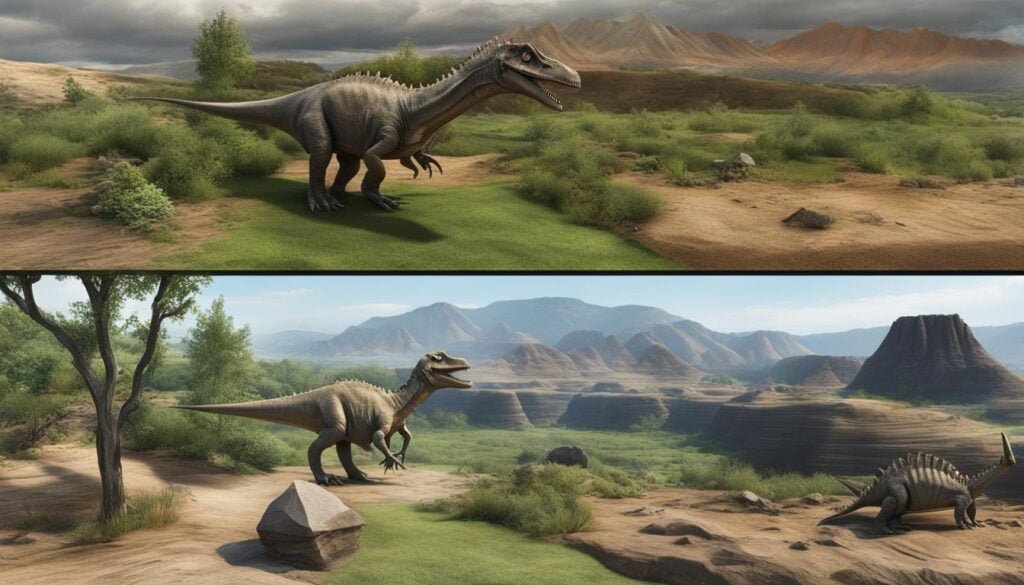
The Sensitivity of Turtles to Habitat Disturbances
The impact of climate change on turtles and their habitats is a topic of growing concern. Turtles, as ectothermic animals, heavily rely on external conditions to regulate their body temperature and metabolic processes. This makes them particularly sensitive to alterations in their habitat, such as changes in vegetation, water availability, and temperature fluctuations.
A study conducted by the University of Calgary reveals that turtles are highly influenced by habitat disturbances, even more so than direct climate changes. It suggests that ideal climatic conditions alone may not guarantee the survival and persistence of turtle populations. Instead, the suitability of their habitats plays a crucial role in their long-term survival.
Turtles are more sensitive to changes in their habitat than to climate changes. Even if climatic conditions are considered “ideal,” turtles may still disappear or not recover unless their habitats are suitable.
The disappearance of turtles in certain areas can be attributed to several factors related to habitat disturbances, including pollution, deforestation, urbanization, and the degradation of aquatic ecosystems. These disturbances can disrupt breeding patterns, disrupt food availability, and destroy crucial nesting sites, leading to population declines and even local extinctions.
It is essential for conservation efforts to prioritize the protection and restoration of turtle habitats to ensure the long-term survival of these vulnerable species. By addressing habitat disturbances, we can mitigate the impact of climate change on turtles and provide them with the necessary conditions to thrive and adapt.
The Impact of Asteroid Strike and Volcanism on Potential Dinosaur Habitats
When it comes to understanding the impact of climate change on dinosaur habitats, it is crucial to evaluate the role of both the asteroid strike and volcanic eruptions that occurred millions of years ago. These cataclysmic events had a significant influence on the availability of potential habitats for dinosaurs. Through a combination of geological markers, mathematical models, and knowledge about the environmental requirements of dinosaurs, researchers have been able to shed light on the climate-changing power of the asteroid and volcanism.
The asteroid strike, commonly referred to as the Chicxulub impact, is believed to have wiped out all potential habitats for dinosaurs. The resulting extreme global cooling and impact winter made it nearly impossible for these reptiles to survive. However, the volcanic eruptions that coincided with the asteroid strike had a slightly different impact. While they did not create a suitable environment for dinosaurs globally, they did result in the creation of viable regions around the Earth’s equator.
Researchers have determined that the combination of the extreme global cooling caused by the asteroid impact and the warming effect of volcanic eruptions played a significant role in shaping the availability of suitable habitats for different dinosaur species. This insight emphasizes the complex interplay between climate-changing events and their impact on potential habitats.
To illustrate these findings, let’s take a closer look at a hypothetical table that outlines the contrasting effects of the asteroid strike and volcanic eruptions on potential dinosaur habitats:
| Asteroid Strike | Volcanic Eruptions | |
|---|---|---|
| Global Impact | All potential habitats wiped out | No global impact, but warming near the equator |
| Duration of Effects | Long-lasting impact on habitats | Relatively short-term warming near the equator |
| Species Survivability | Most species unable to adapt and survive | Some species able to find suitable habitats near the equator |
This table provides a visual representation of the divergent effects of the asteroid strike and volcanic eruptions on potential dinosaur habitats. It illustrates the global impact and long-lasting effects of the asteroid strike, as well as the localized and temporary nature of the warming caused by volcanic eruptions near the equator.
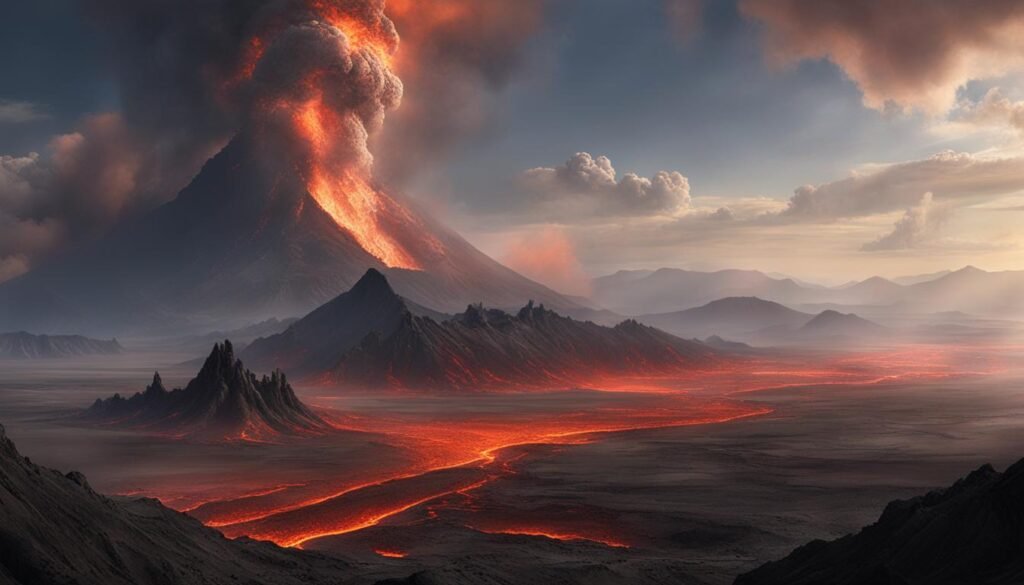
Overall, understanding the impact of both the Chicxulub asteroid strike and volcanic eruptions is crucial in comprehending the availability of potential dinosaur habitats. These climate-changing events shaped the Earth’s environment and contributed to the extinction of many dinosaur species while also creating localized warm zones that allowed a select few to survive. By examining these historical events, we can gain valuable insights into the fragility of ecosystems and the adaptability of species to changing environments.
Conclusion
The research discussed in this article sheds light on the significant impact of climate change on dinosaur habitats. The findings highlight the long-term effects of climate change, specifically the extreme global cooling triggered by the asteroid strike and the role played by volcanic eruptions. These changes in the Earth’s climate had a profound impact on the ability of dinosaurs to adapt and survive.
While some species were unable to cope with the changing environments and ultimately became extinct, others may have benefited from the warming effects of volcanic activity. This demonstrates the importance of adaptability in the face of climate change.
Gaining a deeper understanding of the impact of climate change on past ecosystems allows us to draw valuable insights that can be applied to modern-day species. It emphasizes the need for adaptability and resilience in the face of a changing climate.

